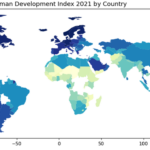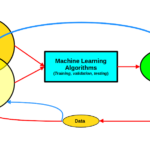A recent report indicates that we are now creating 2.5 quintillion (1 followed by 18 zeros) everyday thanks to the explosion of new technologies and mobile devices. This is what now is known as big data. The big issue with big data is the fact that almost 90% of such data is unstructured and thus difficult to handle and understand without proper handling.
Not surprisingly, the post-2015 HLP has called for a “data revolution” which, in essence, is a call to harness data for development purposes. The core idea here is to use data, big and small, to improve decision and policy making processes, while fostering transparency and accountability across the board. UNDP has also joined the data revolution and the calls for more transparency by opening some of its data to the public, and promoting and hosting IATI.
One of the issues that is usually not taken into account when it comes to data revolution is the production and distribution of data which can be complex, particularly in public institutions and development organizations. The restructuring organograms recently released by UNDP are one case in point as the data shared with UNDP staff is only available in graphical format. Thus, staff that are looking for specific information have to navigate over more than 150 PDF unlinked pages to find data.
Furthermore, it is also difficult to get a sense of the changes being implemented in terms of staff as any sort of analysis, aggregation and compilation cannot be immediately done, given the formatting of the data. For example, if a staff member would like to know how many P4 posts are in BPPS HQ, she will have to count by hand the various organogram boxes while navigating through at least 40 PDF files,
This report is an attempt to address to address these issues and provide UNDP staff with a tool to easily find information on the new structure of UNDP. It also presents an analysis of the the data based on the new structure of BPPS with its new teams and staff distribution between HQ and the various regional and global policy centers. A spreadsheet is also being made available to facilitate access to the data and help those who are looking to compete in the upcoming job fairs, for example.
Read the full report here.
Download data here.
Cheers, Raúl





